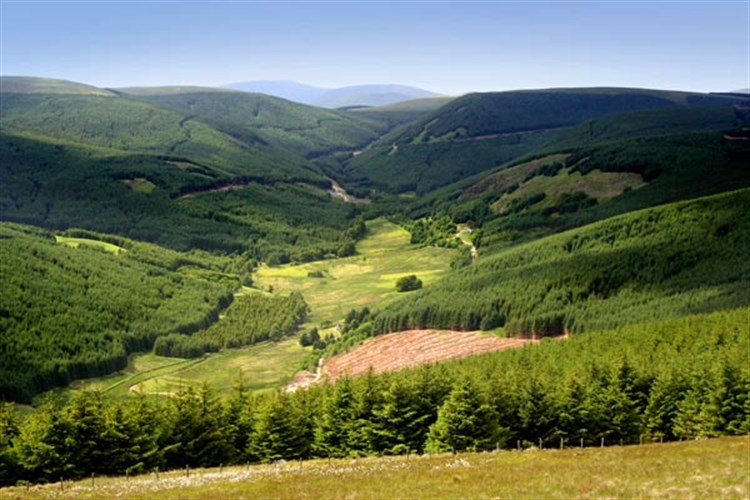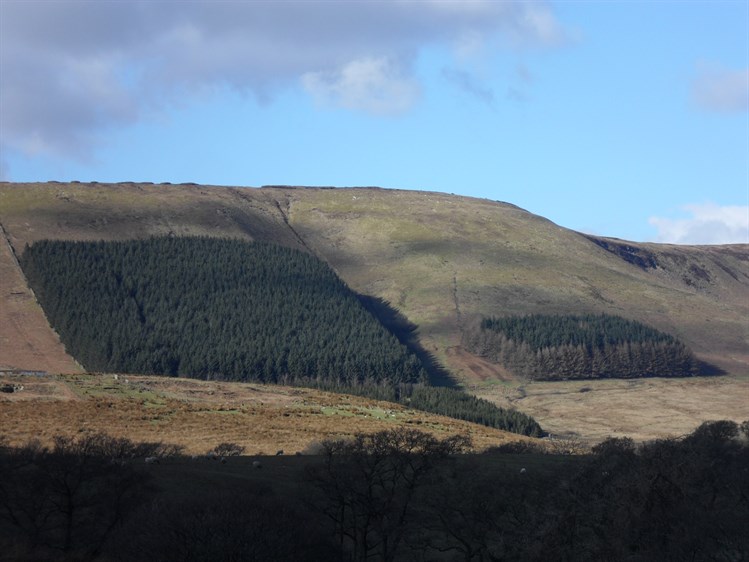Modern Forestry
The way we plant and manage forests has changed. As forests mature we can harvest the wood and replant them with modern, sustainable productive forests and woodland.
Following the planting programmes of the 1950s, 60s and 70s, the forest industries faced what was described as a “wall of wood”. The aim was to increase the industry's processing capacity to utilise the high volumes of timber that would become available.
Since then the industry has made substantial investments in processing capacity, becoming one of the most modern and competitive sectors in Europe. However, the accuracy of the predicted future volumes of timber have since been questioned and forecasts revised.

Modern design of a commercial upland forest in Scotland
Plantations of the 1970s and 1980s (below) are often what people see in our landscapes now and their harvesting can raise concerns over lost forests. But as these forests mature we can harvest the wood and replant them with modern, sustainable productive forests and woodland (above).

There are now significant concerns over the availability of future timber to supply the expanding processing industry. These concerns have been amplified by poor rates of replanting, especially of commercial timber - coupled with strong demand for woodfuel.
